|
|
Editorial
Studentships at ESO are unique in that they provide the opportunity to work in an environment quite different from a university setting. By spending portions of their formative years as researchers, near an observatory, students can broaden their experience. The additional adventure of living in South America may be attractive to some individuals.
ESO astronomers act as supervisors for the duration of the time students spend at ESO. This brings the mutual benefits of close collaboration for the student, university supervisor, and ESO co-supervisor. A visit from the university supervisor during the tenure of the student at ESO is encouraged and may be supported through the visitor programme. The studentship programme enhances the cohesiveness between ESO and its community; I consider this a major benefit. The ESO studentship has been running for over two decades, and we meet many former students either observing, at workshops, contributing to new instruments, or on one of our committees. We are very glad to have the chance to work with young astronomers and share our enthusiasm for astronomy with them.
Bruno Leibundgut
Director for Science
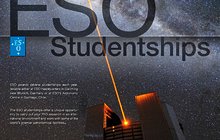
|
23 May 2013: The research studentship programme provides an outstanding opportunity for Ph.D. students to experience the exciting scientific environment, at one of the world's leading observatories, for a period of up to two years. ESO's studentship positions are open to students enrolled in a university Ph.D. programme in astronomy or related fields. Students accepted into the programme work on their doctoral project ...
|
| Read more |
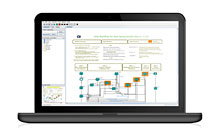
|
23 May 2013: A new version of ESO's pipeline reduction environment (Reflex 2.4) was made available on 6 May 2013. Reflex allows easy and intuitive execution of reduction pipelines, including interactive inspection of intermediate results and tuning of pipeline parameters. The new version includes improvements to the interactive GUIs, bug fixes, and significant improvements to some of the supported pipelines. Currently, Reflex ...
|
| Read more |
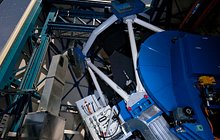
|
23 May 2013: A revised version of the Phase 3 policies has been published, and this now includes specific information on VST, spectroscopic surveys and catalogue information, and VISTA public survey policies. The list of frequently asked questions has also been updated. The configuration of the Phase 3 validator has been updated and is now ready to be used for the ...
|
| Read more |
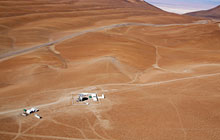
|
23 May 2013: A new email address for all questions related to the ESO use of the APEX telescope has been set up: apex-help@eso.org. All questions regarding APEX Phases 1 and 2 and the content of data deliveries should be directed to this new address. Technical questions regarding the downloading of APEX data from the ESO archive should be directed to
|
| Read more |
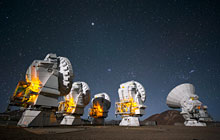
|
23 May 2013: The last 7-metre antenna forming the Atacama Compact Array (ACA) has been delivered to the ALMA high site. The ACA is a subset of 16 closely separated antennas, four 12-metre and twelve 7-metre antennas, produced in and delivered by Japan. The ACA is crucial for filling in the short spacings in the uv-plane coverage of ALMA and for total power ...
|
| Read more |
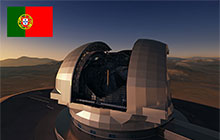
|
23 May 2013: Portugal confirmed that it will join the list of participants in the European Extremely Large Telescope (E-ELT) programme. Thirteen ESO Member States have now confirmed their full participation in the project. More details.
|
Upcoming ESO or ESO-Related Workshops
- Science with ALMA Band 2 Workshop
Bologna, Istituto di Radioastronomia, 27 - 28 May 2013
ALMA Band 2 covers 65 GHz to about 90 GHz (3.3 - 4.6 mm wavelength). This workshop is to discuss and develop the science case for Band 2 in preparation for the future funding of the design and development of receivers for this band.
In developing the science case there are two important considerations in addition to the new frequency range band 2 would make accessible with ALMA. First, the enhanced science possible if a single receiver could be developed to simultaneously cover from 65 GHz to 116 GHz, encompassing both bands 2 and 3. Second, the possibility of having a 16 GHz instantaneous bandwidth.
- MPA/MPE/ESO/EC Joint Conference on The Physical Link between Galaxies and their Halos
Garching, 24 - 28 June 2013
This conference aims to bring together observers and theorists covering the three kinds of galaxy halos - stellar, gaseous and dark matter. A wide range of topics from halo masses, gaseous interactions, abundances of halos, stellar content, relationship to galaxy scaling relations, co-evolution with host galaxies and their use as clues to galaxy formation will be presented. Details can be found here and further information is available by email. The deadline for registration is 01 April 2013.
- SCIENCE OPERATIONS 2013: Working Together in Support of Science
ESA/ESO Conference at ESAC, Madrid, Spain, 10 - 13 September 2013
The objective of SCIOPS2013 is to present and discuss the various approaches to science operations in spacecraft missions and ground-based facilities for Astronomy and Solar System Science. The meeting will cover all phases of science operations, from initial concepts to legacy products, including general organisation and management aspects, community support and services, instrument planning, handling and calibration, science data processing and archiving. The Call for Abstracts is open and more details are available here. Registration will close on 15 July 2013.
- Challenges in UV Astronomy (ESO/NUVA/IAG Workshop)
Auditorium, ESO Garching, 7 - 11 October 2013
Jointly organised by the Network for UV Astronomy (NUVA), ESO and the IAG Brazil, this workshop will focus on efficient exploration from the ground of the UV spectrum region. New UV instrumentation, such as CUBES - a joint ESO-Brazil high-resolution UV spectrograph - being planned for the VLT, will open up observation of UV spectral features. The present and future of the field and, in particular, the scientific case of CUBES, will be discussed. Further details are available here or please contact uvastro@eso.org for more information. The registration deadline is 30 August 2013.
- ESO Workshop on Deconstructing Galaxies: Structure and Morphology in the Era of Large Surveys
Santiago, ESO Santiago, 18 - 22 November 2013
The study of the structure and morphology of galaxies is one of the major astronomical tools to address how galaxies form and evolve. There has been much recent progress in understanding the properties of different structural components in nearby and intermediate redshift (z ~ 1-2) galaxies. The strengths and limitations of the different techniques for obtaining structural measures of galaxies, particularly with regard to handling large surveys, will be highlighted. This conference will bring together over 100 observers and theorists, and it is intended to be highly participative, with substantial time devoted to discussions. More details can be found here.
- Workshop on 400 Years of Stellar Rotation
Natal, Brazil, 21 - 26 November 2013
In 1613 Galileo Galilei observed solar spots and interpreted their motion as due to solar rotation. After 400 years we are able to quantify in detail the behaviour of the rotation of the Sun in time, as well as the evolutionary behaviour of stellar rotation all across the HR Diagram. This meeting will consider all aspects of stellar and solar rotation and, in addition, present the state of the art of stellar rotation coming from the space missions CoRoT, Kepler and Spitzer. The workshop is co-sponsored by the European Southern Observatory and the International Institute of Physics of Natal and further details can be found here. The deadline for registration is 01 June 2013.
- 3D2014 - Gas and stars in galaxies: A multi-wavelength 3D perspective
Garching, 24 - 28 February 2014
|
|
|
|
|
|
|
|